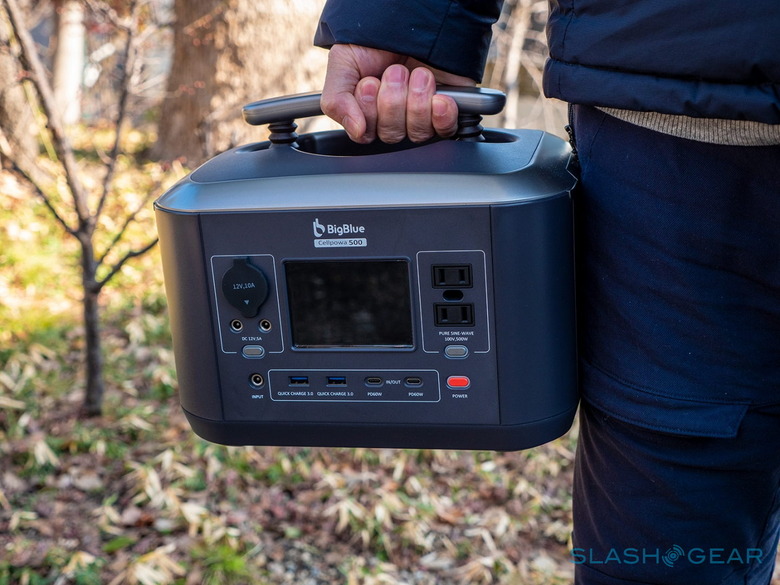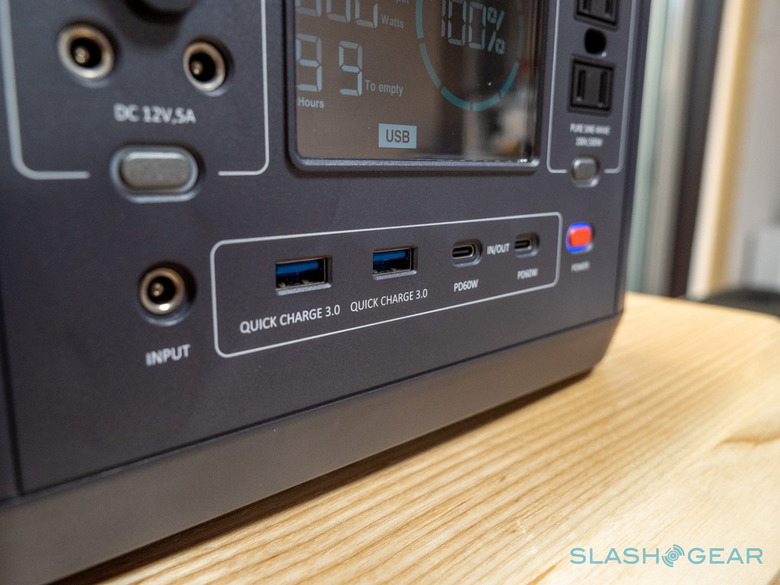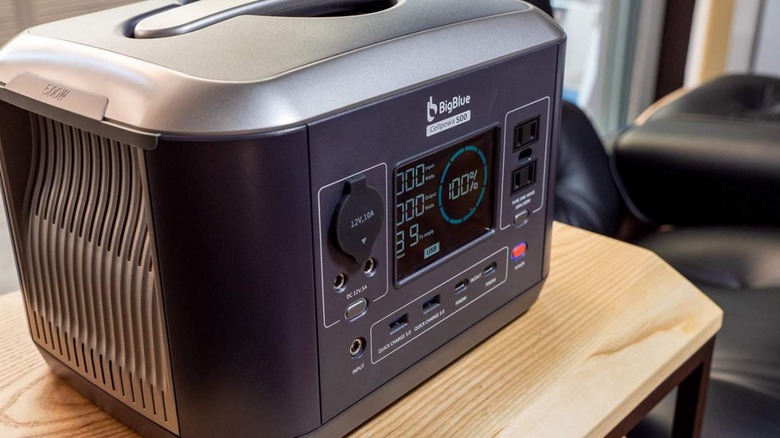BigBlue Cellpowa500 Portable Power Station Review
- Portable and compact design
- Retractable handle for easier carrying and storage
- Large LED emergency light
- 60W USB-C might not be enough for some laptops
- Can't charge via AC and solar at the same time
We've reviewed quite a number of portable power stations, some of which stretch the definition of "portable". While many of these products can clearly meet any power need during an outage or an emergency, not everyone requires 3000W or more of power, especially for a quick trip outdoors or when spending all day working somewhere lacking publicly accessible power outlets. That's where BigBlue's Cellpowa500 (CP500) comes in. We recently tested the power station to see what it can deliver and were pleased with the results.
Design
It's definitely refreshing to review a portable power station that won't strain one's back when trying to lift it. Of course, its 17.2lb (7.8kg) weight is no laughing matter, but it's nothing compared to some of the hulking power stations on the market. The reduced weight does mean this model skimps a bit when it comes to battery capacity, which we'll get to later, but it's important to note the CP500 wasn't designed for the same sort of usage scenarios as those larger products.

BigBlue designed Cellpowa500 to be easy to carry for short outdoor activities off the grid. In addition to its relatively light weight, the CP500 sports a retractable handle, the design of which makes it easier to carry the device while avoiding hassle when it's time to put the power station in storage. That said, the top of the box-shaped device has a curved surface that's less than ideal for placing objects, as they might slide off.
The CP500's design is spartan with a focus on convenience more than anything else. All of the input and output ports are located on the front so that cables don't run from all sides. The fan vents are located only on the left side, meaning you only have to mind the ventilation on one side. The device's back, meanwhile, has a large LED light with two intensity settings and a blinking SOS mode. As a result, you won't have to settle for a narrow beam of light when fumbling in the dark.

Battery and Output
As mentioned, the BigBlue Cellpowa500 sacrifices battery capacity for portability, but that's not a knock against it. Everyone has different needs, and the CP500 meets those needs for many consumers. For some users, the power station's 537.6Wh battery is enough to get them through the day, especially given the other benefits the device offers.
Despite its compact size, there is a port available for every kind of device and need, including two 120V AC outlets, a car charger, two barrel-type DC outputs, a DC input for the AC charger and solar panels, two USB-A ports, and two 60W USB-C ports. The CP500's capacity and output means it can charge or power up almost anything, including a 45W car fridge. The 60W USB-C output, however, might not be sufficient for some laptops. Consumers in countries where 200V AC or higher is the norm will also want to take note of the power station's limitations in that regard.

The Cellpowa500 also has some nifty features that make up for its smaller battery size. You can, for example, use all the output ports at the same time, though naturally that will drain the battery faster. You can also use DC passthrough, which means you can use DC output while charging the power station. Unfortunately, that won't work for the AC outlets due to safety measures.
BigBlue also packed quite a few other safety features inside this small box. In addition to using a safer LiFePo4 battery, the CP500 also features over-charge, over-current, and overheating safeguards and will automatically shut down ports that exceed the safety limits.
Charging
Like any portable power station, the 500W battery won't last forever and it'll eventually need to be recharged. The smaller battery, relatively speaking, means the CP500 charges faster than larger models, plus BigBlue included features to make the process even faster.

The Cellpowa500 supports your typical charging options, including car charger, AC, solar, and USB-C. When using a single source, it will take at least 6 hours to fully recharge the power station's battery; if you're using a car charger, it'll naturally take longer due to the lower power output. What makes the CP500 special is its support for combining DC and USB-C charging to speed up the process, ultimately reducing how long it takes the power station to recharge. When using the AC adapter and the two USB-C ports for input, the CP500 can go from zero to full in around 2 hours.
BigBlue's power station also supports solar charging, of course, but it uses the same DC input as the AC charger, so you can't use both methods at the same time. The company sells its own set of solar panels for that purpose, and the CP500 supports the MPTT tech to make it even faster.
Wrap-up
With the rise in power interruptions caused by inclement weather conditions across the country, the need for alternative power sources has also risen. There's a power station on the market that covers nearly every usage scenario and budget, but some consumers simply require a portable companion, especially for those times you need to pack up and leave quickly.
The BigBlue Cellpowa500 definitely meets that need with its lightweight design and multiple output options. The device won't power your entire house in a pinch, but it will let you enjoy a day out in the sun without worrying about your gadgets.
With very few flaws, the $399 CP500 delivers a compact and reliable portable power solution, one that doesn't take up too much space or cost too much to serve as a backup power source on stormy days.

